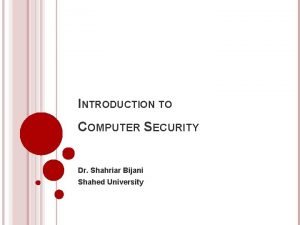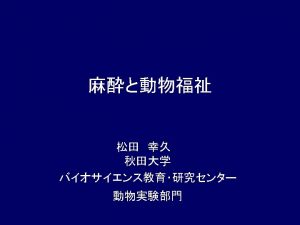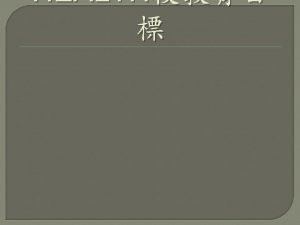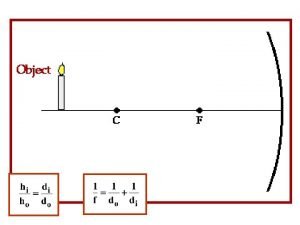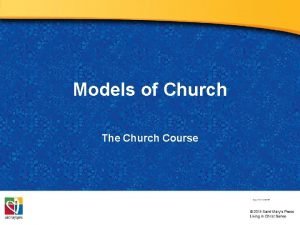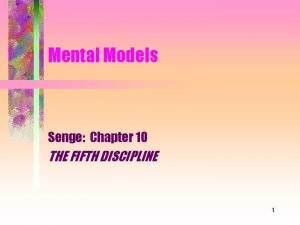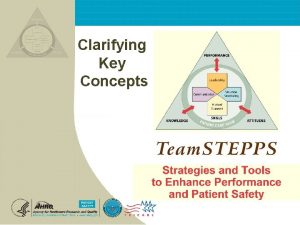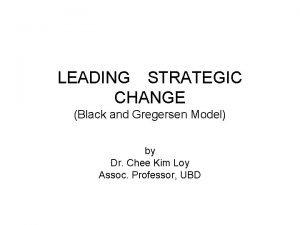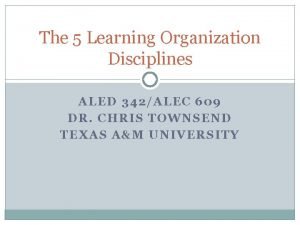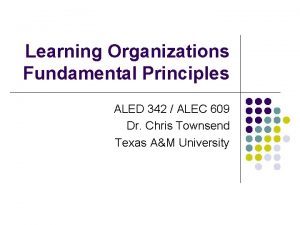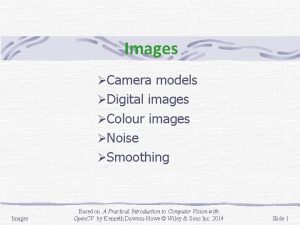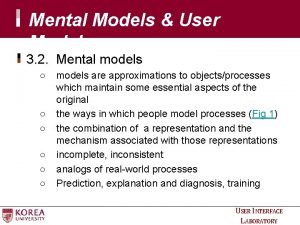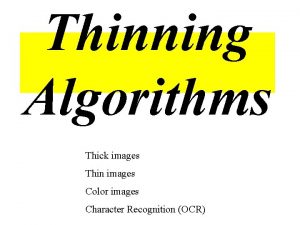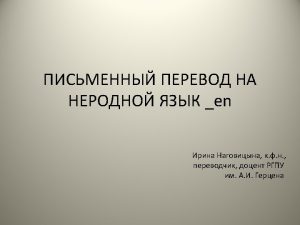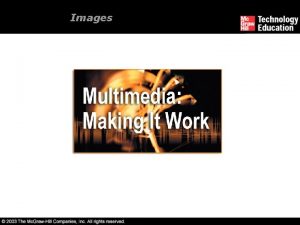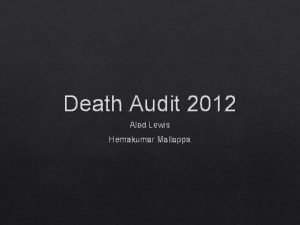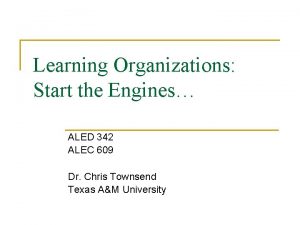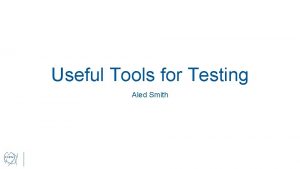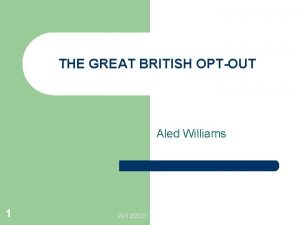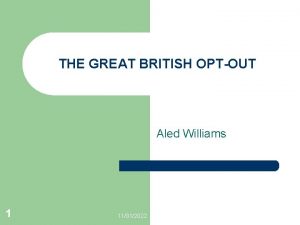Mental Models ALED 342ALEC 609 Mental Models Images



















- Slides: 19

Mental Models ALED 342/ALEC 609

Mental Models Images, assumptions we have of others, institutions, philosophies, etc. ü See through your frame of reference ü

Why Bother? ……Misleading Mental Models & Results: n Parents believe education is school’s responsibility n n Health Administrators think hospitals are for seriously ill n n Therefore: parents not involved in school reform Therefore: hospitals are not part of community health Ag. producer believes in organic practices n Therefore: will not communicate with University Consultants

5 Actions Connected to Changing Mental Models 1. 2. 3. 4. 5. Create the new mental model To be effective, practice over time Expect strong emotions and responses from others Use frustrations as a source for “inquiry” Use excitement as a warning of “unbridled action”

Productive Mental Models from Improved Conversation Skills: 1. 2. 3. 2 Column Exercise Conversation Palette Conversation Protocols

LEARN: “ 2 Column Exercise” An application for Mental Models: From: Theory in Practice, Argyris & Schon 1. 2. RIGHT-HAND COLUMN: what was actually said LEFT-HAND COLUMN: what you were really thinking

Outcomes from “ 2 Column Exercise” Left Hand column is the hidden Mental Model n If Left Hand column is hidden, “costs” will occur n n n Costs include mistrust, misunderstanding Costs lead to productive relationships

Critical Conversations – Balancing Advocacy with Inquiry

Creating a Balanced Conversation Using 4 roles that exist in the Advocacy/Inquiry system Fifth Discipline Fieldbook, page 252

A D TE GE NE G IN LL RA TI NG V O C A C Y OB SE RV IN G I N Q U I R Y G AS N I K

Conversation Palette – shows 4 Conversation Quadrants A D V L L E G IN GE T NE RA TI N G O C A C Y OB SE RV IN G I N Q U I R Y K S A G IN

TELLING n ASSERTING: “here’s what I say, and here’s why I say it. ” n EXPLAINING: “here’s how the world works and why I can see it that way n DICTATING: (dysfunctional) “here’s what I say, and never mind why. ”

ASKING n CLARIFYING: “what is the question we are trying to answer? ” n INTERVIEWING: exploring others’ points of views and the reasons behind them. n INTERROGATING: (dysfunctional) “why can’t you see that your point of view is wrong? ”

OBSERVING n BYSTANDING: making comments which pertain to the group process, but not to content. n SENSING: watching the conversation flow without saying much, but keenly aware of all that transpires. n WITHDRAWING: (dysfunctional) mentally checking out of the room, and not paying attention.

GENERATING n SKILLFUL DISCUSSION: balancing inquiry & advocacy, genuinely curious, explicit, asks others about assumptions without being critical/accusing. n DIALOGUE: suspending all assumptions, creating collective thinking. n POLITICKING: (dysfunctional) “giving the impression of balancing advocacy and inquiry, while being close-minded. ”

Improve Communication with BALANCE: l Advocacy: make your own thinking visible to others l Inquiry: develop knowledge about others’ thinking/reasoning

The Scene: You were on a fabulous Caribbean cruise when a serious storm developed. The ship was struck by lightening, a fire erupted, everyone had to abandon ship, and you were forced into a life raft. There is room and food for only 8 people. People must be sacrificed to save the rest. The decision of who to sacrifice must be made by a group consensus – no one can volunteer to jump out of the raft. Each member must plead their own case (why you should live) and others should engage in balance and protocol to create a beneficial conversation and productive decision. You have 15 minutes to make the decision of who goes overboard so the rest can live – after 15 minutes, the life boat will sink. *** PRACTICE PALETTE ***

Evaluation: 1. Which quadrants of the Conversation Palette were used by the people in your group? 2. What quadrants of the Conversation Palette were easiest for you to use? 3. What quadrants of the Conversation Palette were most difficult for you to use? 4. How can you develop your Generating skills?

Applying your Knowledge Can you DEFINE AND PRACTICE: n n n 2 Column Exercise Balanced dialogue with the Conversation Palette Make decisions using the 4 Conversation Protocols?
 Global sustainability institute
Global sustainability institute Dr bijani
Dr bijani Aw609 certification
Aw609 certification Majesteit groot is uw majesteit
Majesteit groot is uw majesteit Directive 86/609/eec
Directive 86/609/eec Ucc 2-316
Ucc 2-316 Https://images.search.yahoo.com/search/images
Https://images.search.yahoo.com/search/images How to save images on google images
How to save images on google images Virtual vs real image
Virtual vs real image Https://tw.images.search.yahoo.com/images/view
Https://tw.images.search.yahoo.com/images/view Hi/ho = di/do
Hi/ho = di/do Servant model of the church
Servant model of the church Semimodals
Semimodals Mental models peter senge
Mental models peter senge Mental models
Mental models Black and gregersen mental models
Black and gregersen mental models Mental health coping skills jeopardy
Mental health coping skills jeopardy Mental health and mental illness chapter 20
Mental health and mental illness chapter 20 Good afternoon happy monday
Good afternoon happy monday Money as a medium of exchange images
Money as a medium of exchange images

